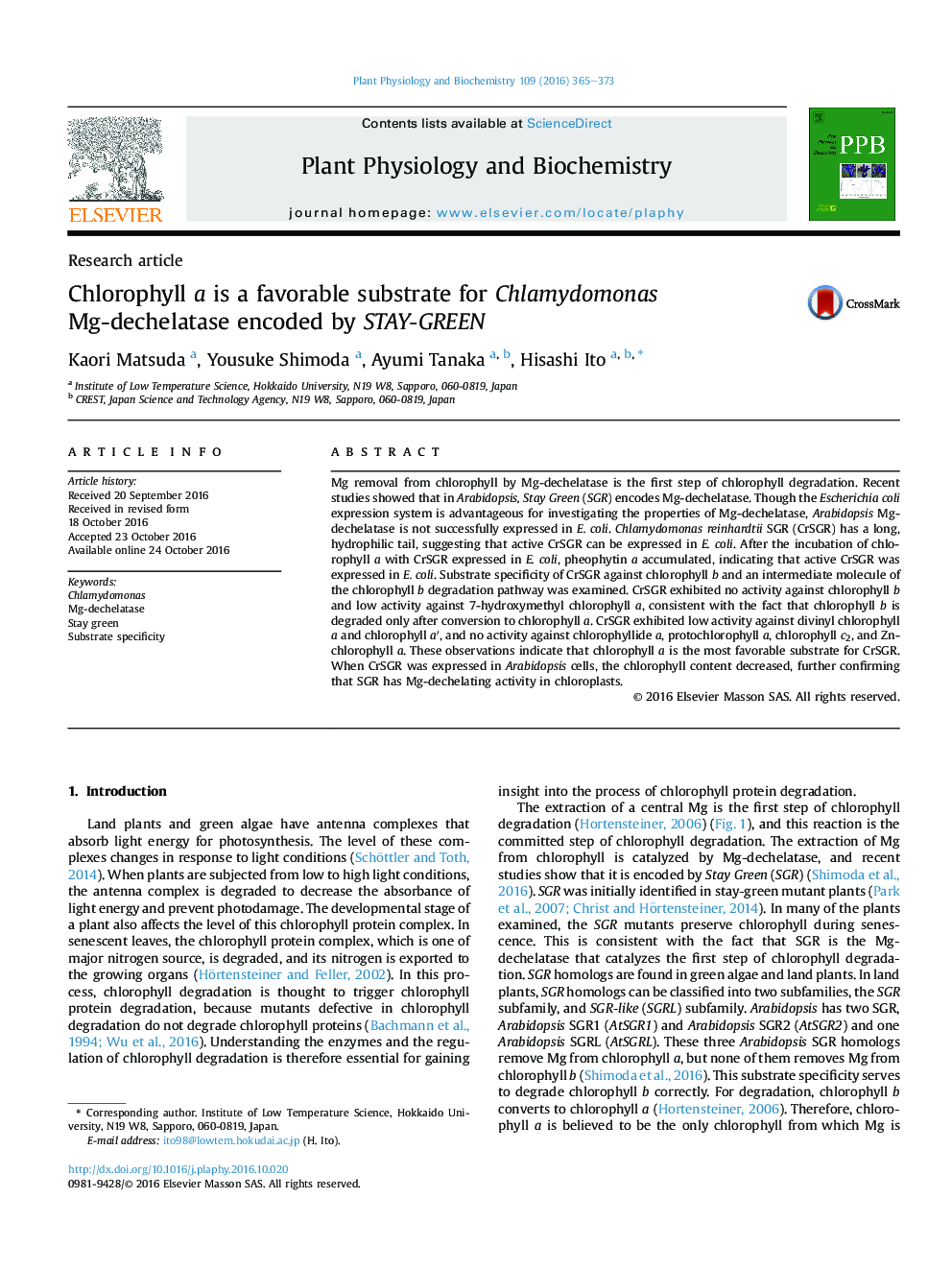| کد مقاله | کد نشریه | سال انتشار | مقاله انگلیسی | نسخه تمام متن |
|---|---|---|---|---|
| 5515654 | 1541912 | 2016 | 9 صفحه PDF | دانلود رایگان |

- Chlamydomonas has STAY-GREEN, encoding a Mg-dechelatase.
- Chlamydomonas Mg-dechelatase can be expressed in E. coli.
- Chlorophyll a is an efficient substrate for CrSGR.
- Chlamydomonas Mg-dechelatase is active in Arabidopsis cells.
Mg removal from chlorophyll by Mg-dechelatase is the first step of chlorophyll degradation. Recent studies showed that in Arabidopsis, Stay Green (SGR) encodes Mg-dechelatase. Though the Escherichia coli expression system is advantageous for investigating the properties of Mg-dechelatase, Arabidopsis Mg-dechelatase is not successfully expressed in E. coli. Chlamydomonas reinhardtii SGR (CrSGR) has a long, hydrophilic tail, suggesting that active CrSGR can be expressed in E. coli. After the incubation of chlorophyll a with CrSGR expressed in E. coli, pheophytin a accumulated, indicating that active CrSGR was expressed in E. coli. Substrate specificity of CrSGR against chlorophyll b and an intermediate molecule of the chlorophyll b degradation pathway was examined. CrSGR exhibited no activity against chlorophyll b and low activity against 7-hydroxymethyl chlorophyll a, consistent with the fact that chlorophyll b is degraded only after conversion to chlorophyll a. CrSGR exhibited low activity against divinyl chlorophyll a and chlorophyll aâ², and no activity against chlorophyllide a, protochlorophyll a, chlorophyll c2, and Zn-chlorophyll a. These observations indicate that chlorophyll a is the most favorable substrate for CrSGR. When CrSGR was expressed in Arabidopsis cells, the chlorophyll content decreased, further confirming that SGR has Mg-dechelating activity in chloroplasts.
167
Journal: Plant Physiology and Biochemistry - Volume 109, December 2016, Pages 365-373